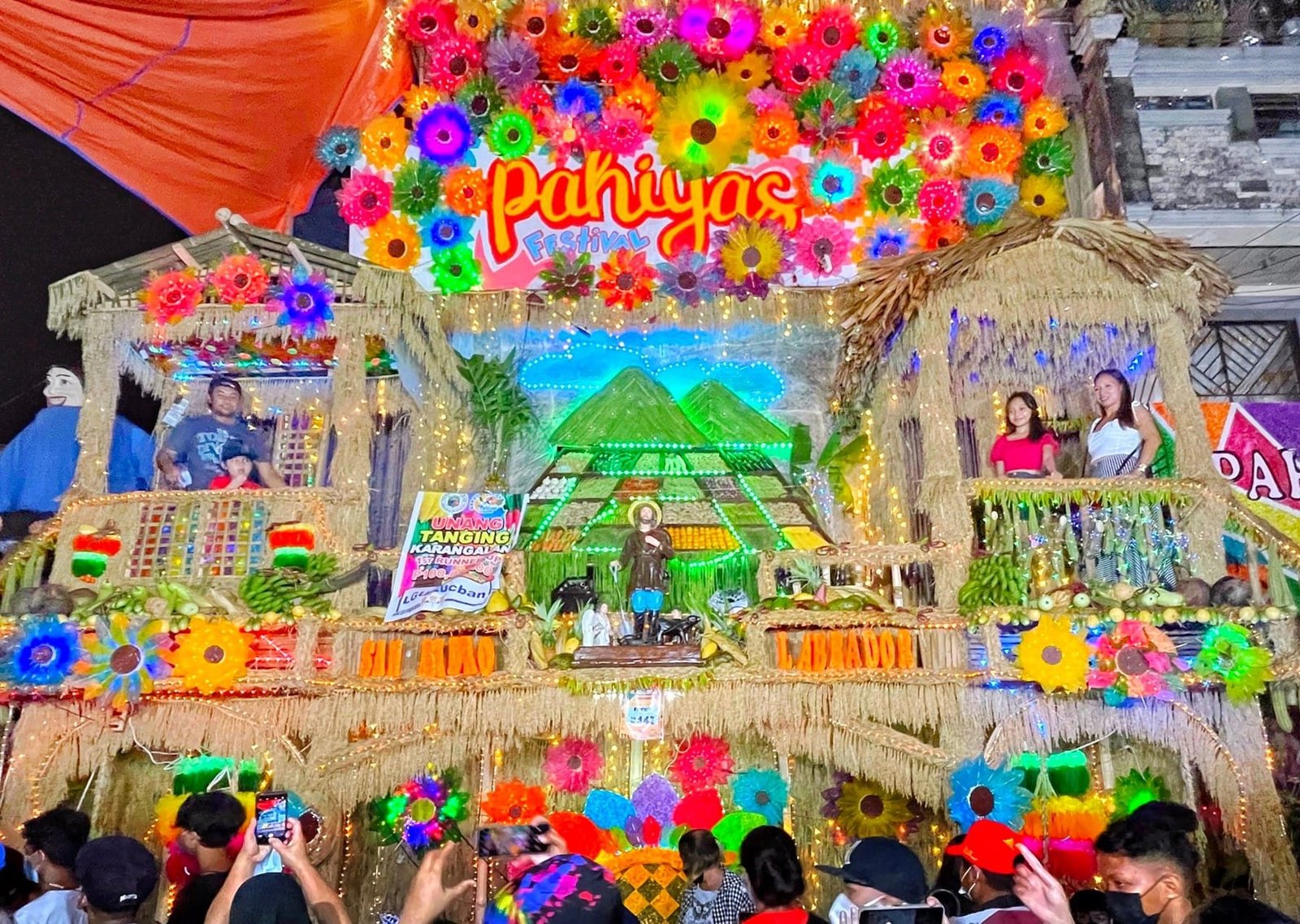Origins of the Pahiyas Festival
The Pahiyas Festival, celebrated in Lucban, Quezon, is a vibrant tribute rooted deeply in the agrarian customs of Filipino communities. Its origins can be traced back to the agricultural practices that characterized the lives of local farmers, particularly focusing on the essential role of rice. This festival primarily emerged as a way for these dedicated farming communities to express gratitude to their patron saint, San Isidro Labrador, who is often regarded as the protector of crops and harvests. The farmers would gather to honor him, thanking him for the abundance of their yields, thus intertwining their faith with their livelihood.
Historically, the festivities were relatively modest. Farmers would showcase their harvested produce, displaying fruits, vegetables, and other agricultural goods. This initial act of appreciation has evolved into a much larger event celebrating the prosperous harvest, transforming the simple expression of gratitude into a grand festival. As the years progressed, the Pahiyas Festival gradually incorporated more cultural and artistic dimensions, reflecting the local community’s rich heritage and artistic flair. The traditional offerings began to include colorful decorations made from rice and other materials, which not only served as a testament to their harvest but also as a visual representation of their vibrant culture.
<pthe a=”” agricultural=”” agriculture=”” alike.=”” and=”” as=”” attracting=”” become=”” beginnings=”” between=”” both=”” celebrating=”” celebrations.=”” community=”” cultural=”” displays=”” drawing=”” emblem=”” embodiment=”” evolution=”” faith=”” festival=”” filipino=”” from=”” harmonious=”” has=”” humble=”” illustrates=”” in=”” into=”” is=”” it=”” its=”” life.=”” lively=”” locals=”” nature=”” of=”” one.
Cultural Significance and Traditional Practices
The Pahiyas Festival, held annually in Lucban, Quezon, serves as a vibrant manifestation of the community’s agricultural heritage and its deep-rooted cultural identity. Primarily celebrated in May, this festival is a thanksgiving event for a bountiful harvest, reflecting the gratitude of farmers and their families towards the divine for nature’s generosity. The significance of the festival lies not only in its religious undertones but also in its role as a means of fostering community spirit and solidarity among the residents.
One of the festival’s most iconic traditional practices is the decoration of homes with colorful rice wafers known as “kiping.” These delicate, leaf-shaped creations, which come in various hues, are hung around houses to create a visually striking atmosphere that draws visitors from far and wide. The practice emphasizes local craftsmanship and the creative ingenuity of Lucban’s residents, showcasing their talent for transforming simple agricultural products into art. Local produce, such as fruits and vegetables, are also used extensively in the decorations, highlighting the bounty that the region is known for. This dedication to aesthetic representation underscores the importance of agriculture in the lives of the community members and their interconnectedness with the land.
<padditionally, a=”” activities,=”” age.=”” agricultural=”” also=”” among=”” and=”” as=”” beliefs=”” both=”” but=”” celebrations.=”” commitment=”” create=”” cultural=”” current=”” customs,=”” dances=”” dynamic=”” encompasses=”” experience=”” fade=”” festival=”” festivity.=”” folk=”” generations=”” history=”” honors=”” in=”” influence=”” instills=”” local=”” may=”” modern=”” music,=”” not=”” of=”” only=”” otherwise=”” p=”” pahiyas=”” past=”” performances=”” practices=”” preserve=”” pride=”” procession,=”” reflects=”” residents,=”” reverence=”” rich=”” rituals=”” roots=”” sense=”” serve=”” shared=”” strengthening=”” such=”” tapestry=”” that=”” the=”” their=”” these=”” through=”” to=”” traditional=”” traditions.
Modern-Day Celebrations and Activities
The Pahiyas Festival, a vibrant manifestation of Filipino culture, is celebrated annually in the town of Lucban, Quezon. This festival, which honors the patron saint of farmers, San Isidro Labrador, has evolved into a lively event that attracts both locals and tourists. Today, the Pahiyas Festival showcases a myriad of activities that reflect the community’s creativity and commitment to preserving its cultural heritage while embracing modern influences.
One of the highlights of the Pahiyas Festival is the colorful display of decorated houses, where locals adorn their homes with rice, fruits, and traditional crafts, transforming the town into a picturesque scene unique to the festival. The creativity involved in these decorations is a testament to the ingenuity and resourcefulness of the participants, who often incorporate modern materials and designs into their displays. This fusion offers a glimpse of how traditional practices have adapted to contemporary influences while retaining their cultural significance.
In addition to the house decorations, the festival features a series of lively parades and street dancing, where participants wear vibrant costumes that represent the rich folklore and history of the Philippines. Such performances not only entertain onlookers but also promote community involvement, bringing together various groups and individuals in a shared celebration of heritage.
Furthermore, cooking competitions are a culinary highlight, allowing local chefs to showcase their skills and creativity through traditional dishes. These competitions foster a spirit of camaraderie among participants and contribute to the festival’s overall festive atmosphere. Modernization and the influx of tourism have undoubtedly impacted the Pahiyas Festival, introducing new elements and attracting broader audiences. However, while adapting to new trends, the festival continues to maintain its core values and traditions that connect generations of Filipinos.
The Future of Pahiyas Festival
The Pahiyas Festival, celebrated annually in Lucban, Quezon, is a vibrant display of local culture and artistry that reflects the agricultural heritage of the Philippines. As we look towards the future of this notable Philippine festival, it becomes essential to consider how it will evolve amid changing societal norms and values. With each passing year, new generations bring their perspectives, which can lead to both opportunities and challenges for the festival’s preservation.
One significant challenge is the balance between maintaining traditional practices and adapting to contemporary expectations. While the core elements of the Pahiyas Festival—such as the colorful displays made from rice and other local produce—remain powerful symbols of cultural pride, the younger generation may seek to incorporate modern elements that resonate with their experiences. This delicate act of preserving authenticity while embracing innovation will determine the festival’s relevance in the years to come.
Moreover, the role of local government will be instrumental in promoting the Pahiyas Festival and ensuring its sustainability. By implementing initiatives that support local artisans and farmers, authorities can foster an environment where traditional craftsmanship continues to thrive. Support for educational programs that teach younger generations about the importance of the festival can also help instill a sense of pride and responsibility toward their heritage.
In conclusion, the future of the Pahiyas Festival rests on a combination of honoring its rich history while allowing for necessary adaptations. As long as the spirit of the festival resonates with both residents and visitors alike, and concerted efforts are made to maintain cultural sustainability, its legacy will undoubtedly flourish for years to come. The festival serves not only as a celebration of harvest but also as a reminder of the importance of cultural identity in an ever-evolving world.





